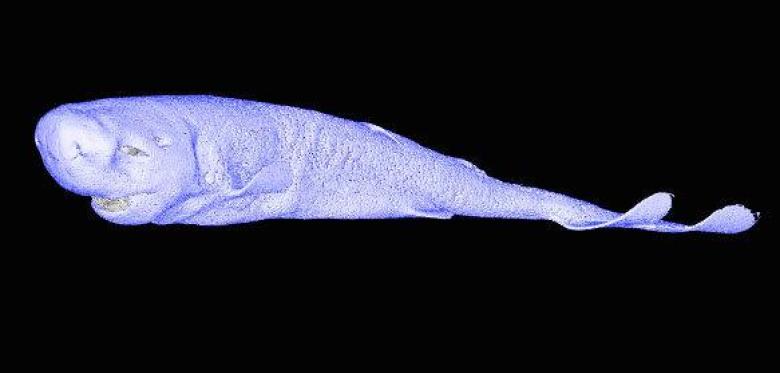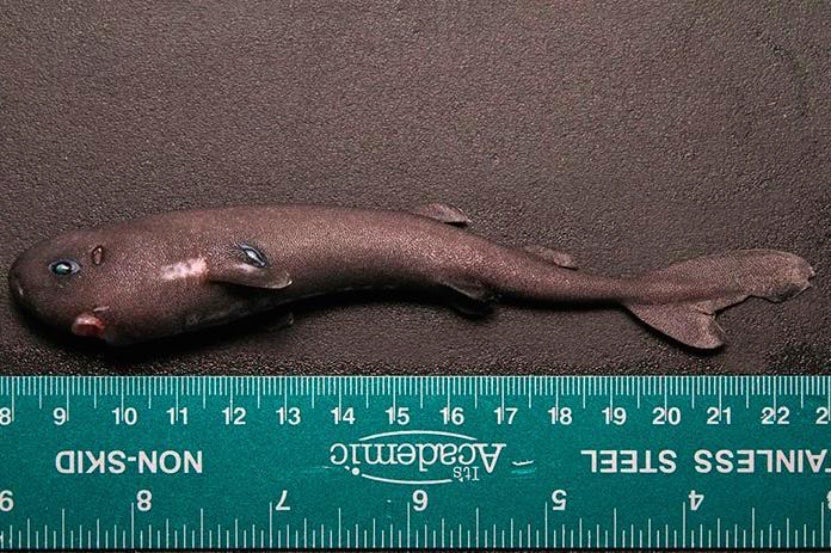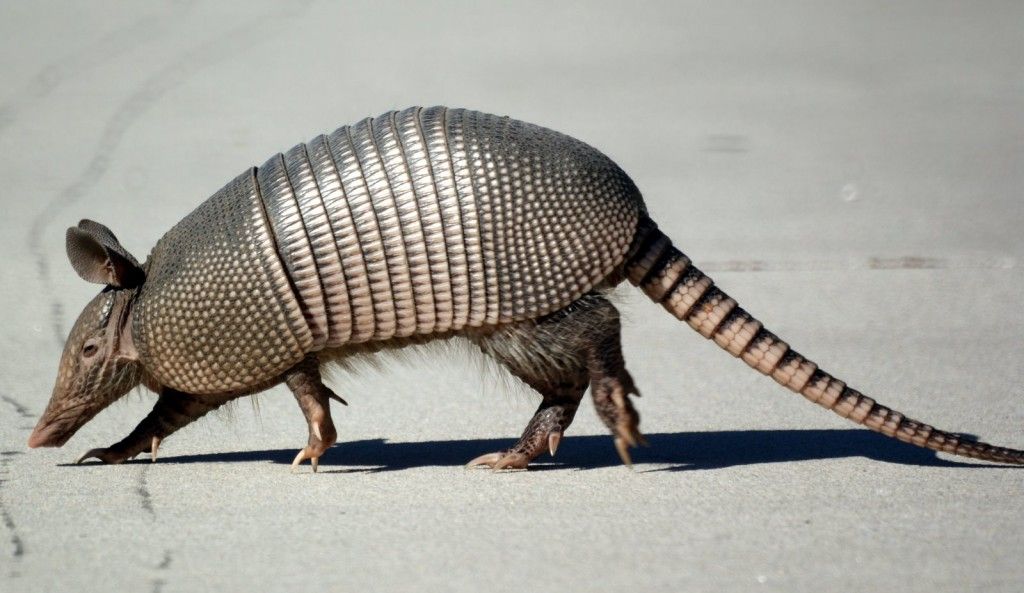
Move over, great white—there’s a tiny shark in town, and it’s carrying something unexpected: pockets. Meet the Mollisquama mississippiensis, better known as the American pocket shark. This elusive and mysterious little creature is one of the ocean’s strangest discoveries.
What is the American Pocket Shark?
The American pocket shark (Mollisquama mississippiensis) is a rare and tiny species of deep-sea shark, measuring just 5.5 inches (about 14 cm) long. It belongs to a group known as Dalatiidae, or kitefin sharks, which includes several deep-sea species. This pocket shark was first described in 2019, based on a single specimen collected in the Gulf of Mexico in 2010.
Why is it called a “pocket” shark?
The name comes from the presence of two small slit-like openings, or “pockets,” located near its front fins (behind the gills). These pockets aren’t for storing snacks—scientists believe they may release a luminous fluid, possibly to confuse predators or attract prey. This feature is not found in most other sharks and adds to the mystery of its biology.
Where was it discovered?
The only known specimen was caught during a NOAA (National Oceanic and Atmospheric Administration) survey in the deep waters of the Gulf of Mexico, at a depth of around 1,000 feet (300 meters). That makes it a deep-sea dweller, likely living in the dark, cold waters of the outer continental shelf.
How is it different from other pocket sharks?
Before the American pocket shark was discovered, scientists had only one other specimen of the pocket shark genus—the Mollisquama parini, found in the eastern Pacific Ocean off the coast of Chile. The American pocket shark is a different species, distinguished by:
- Fewer vertebrae
- Different teeth shapes
- Distinct body proportions
- Size and shape of the pockets
It’s like discovering a brand-new model of a car that no one knew existed before.
Is it bioluminescent?
Very likely—yes. Many deep-sea sharks can produce light using photophores, special light-producing organs. The American pocket shark is covered in these photophores, which might help it camouflage, communicate, or hunt in the dark.
How rare is it?
Incredibly rare. Only one specimen of Mollisquama mississippiensis has ever been found. It was preserved and studied for years before scientists realized it was a completely new species. Because of this, almost nothing is known about its behavior, reproduction, or population size.
Can I see one in an aquarium?
Not a chance (yet). These sharks live in deep, hard-to-reach waters and are extremely rare. The only known specimen is housed at the Tulane University Biodiversity Research Institute, and it’s not alive—it’s a preserved specimen used for study.
Why does this discovery matter?
The discovery of the American pocket shark highlights how little we know about the deep sea. Even in U.S. waters, entirely new species are waiting to be found. Studying animals like this can:
- Expand our understanding of marine biodiversity
- Help us learn how animals survive in extreme conditions
- Provide clues about the health of deep-sea ecosystems
TL;DR
The American pocket shark (Mollisquama mississippiensis) is a rare, tiny, deep-sea shark discovered in the Gulf of Mexico. It gets its name from mysterious pocket-like glands near its fins that may release glowing fluid. Only one specimen has ever been found, making it one of the most elusive sharks in the world.
Even in the age of satellites and smartphones, the ocean still keeps its secrets—and sometimes, those secrets fit in the palm of your hand.

Disclaimer: This blog post is for edutainment purposes only and may not be entirely accurate.






